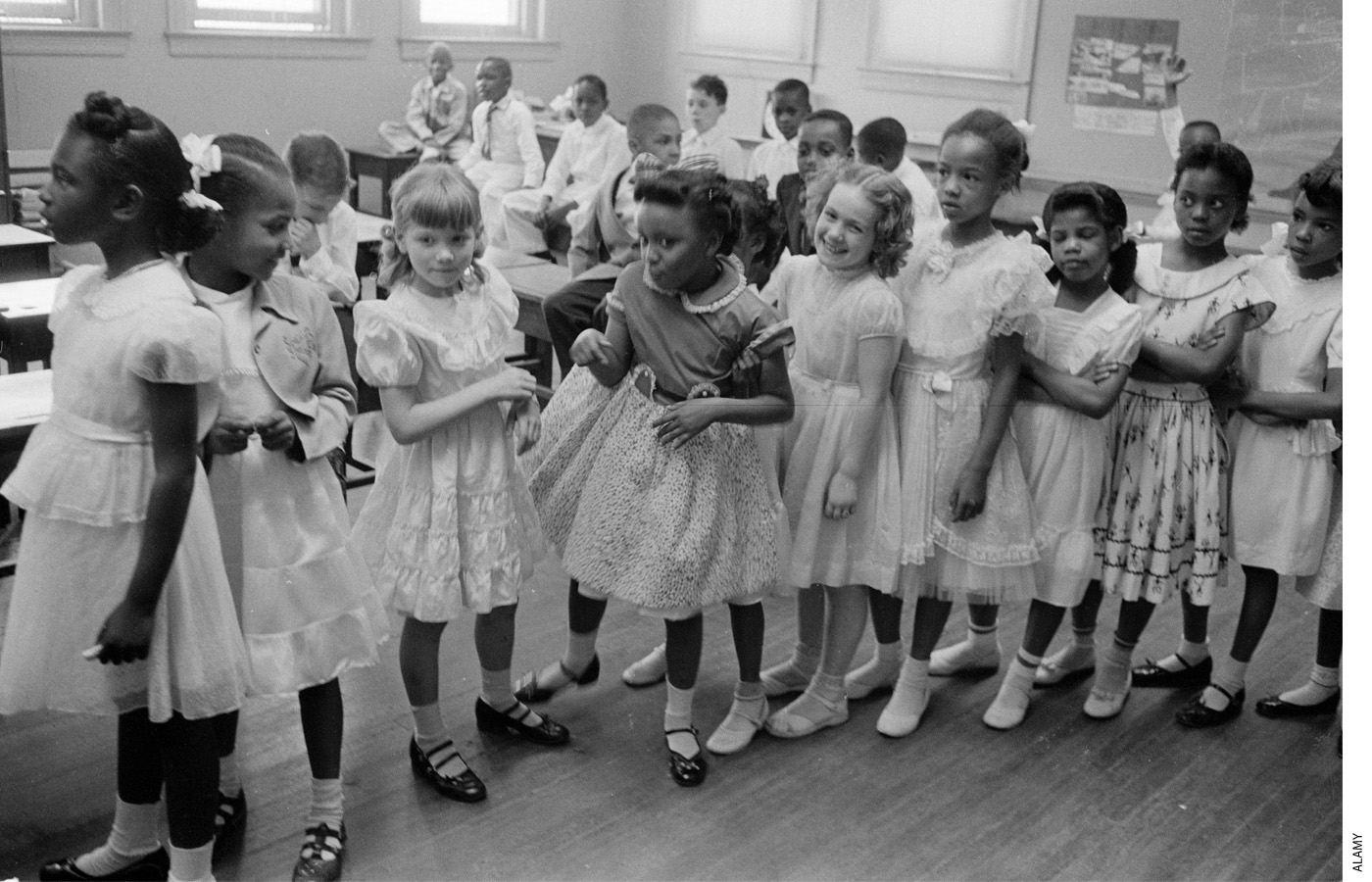
We believe R. Shep Melnick’s The Crucible of Desegregation is the most comprehensive and evenhanded discussion of school desegregation research and policy issues in America. Yet some of the topics that make the book evenhanded were absent from his recent article in Education Next reflecting on the 70th anniversary of the Brown v. Board of Education decision. We would like to comment on these missing topics.
In his book, Melnick covers topics that are too often omitted in academic discourse on school desegregation policy. One important issue is the failure of desegregation to significantly raise Black and Hispanic achievement levels; another is the problem of white flight, which undermined the effectiveness of desegregation plans that relied on mandatory busing.
The article does mention the ambivalent conclusion of Sean Reardon and his co-authors that “It remains unclear if . . . racial segregation affects student achievement,” and he cites a study by Rucker Johnson that found significant positive impacts of desegregation on long-term outcomes such as education attainment and adult wages. But Melnick’s book presents much stronger evidence from a large group of authors and studies that find no consistent effects of desegregation on the academic achievement of Black students.
These works include the early studies by one of us (Armor) and by Nancy St. John, both of which found very limited or no effects of desegregation on Black achievement. Melnick also summarized in his book one of the more rigorous assessments of desegregation and Black achievement, a meta-analysis sponsored by the National Institute of Education, and the conclusion of respected methodologist Thomas Cook that the study found no significant effects on math achievement and very small effects on reading achievement.
The book does not mention several more recent and more rigorous studies led by Armor and by Joshua Angrist, a Nobel Prize winning economist. In a 2018 study, Armor, Gary Marks, and Aron Malatinzky used student fixed effects models to analyze statewide test scores for several states, finding no significant effects of school socioeconomic status or racial composition on achievement. Angrist and his colleagues have applied quasi-experimental methods to show that busing programs for desegregation in Boston and New York currently have no significant effects on student test scores.
One of the outcomes that Melnick did not pay enough attention to in the book is the impact of white flight and why courts largely ignored it when ordering school desegregation. White flight undermines school desegregation plans because there can be no desegregation without white students. A school district with a handful of white students in every school may be perfectly racially balanced, but no one would claim that its schools are desegregated.
In 1991, the Magnet School Assistance Program in the U.S. Department of Education funded a study of desegregation in 500 school districts. We were co-principal investigators of that study. We found that, after controlling for the normal white enrollment change in the absence of a plan, as well as other variables, districts with a mandatory reassignment plan had a 33 percent reduction in white enrollment as compared to those that never had a plan.
We have examined school districts that kept data on the race of students assigned to attend schools composed predominantly by students of another racial group and then compared who was assigned to who showed up. We call these “No-Show” studies. In Baton Rouge, Louisiana, 56 percent of the white students assigned to schools that were greater than 90 percent Black in 1981 failed to show up. In 1978, the no-show rate was 57 percent in Los Angeles and 54 percent in Boston. In Savannah-Chatham County, the white no-show rate for schools above 90 percent Black was 42 percent in 1971 and 1972. By 1984, many of these schools in Savannah had no white students at all, causing the Justice Department to file a motion for further relief. It was a common practice in many school districts with mandatory reassignment plans to keep reassigning white students to the same schools where other white students had previously failed to show up. Many of those schools remained racially identifiable because white students continued not to enroll.
Why did the courts refuse to consider white flight in their decisions? In our opinion, it had to do with their failure to define school desegregation—a theme of Melnick’s scholarship—and with the general propensity of courts to follow precedent. If a court believed school desegregation was racial balance, it would not matter that almost all the white students had left so long as the remaining whites were evenly spread across schools. An ambitious judge was better off ordering a mandatory reassignment plan because those decisions were rarely overturned by higher courts. Only “freedom of choice” plans, which preserved neighborhood schools but permitted Black students to attend schools serving white students, were overturned.
Though Melnick describes these plans as “little more than a transparent fraud,” the notion that freedom of choice was a failure is contradicted by the evidence. If the definition of failure is that the dual school system was not dismantled, freedom of choice was not a failure. In our random sample of 500 districts, only two southern school districts had no Black students in white schools in 1968, which meant that the dual school system had been dismantled. Over time, the southern districts that had no formal desegregation plan, which included neighborhood schools with freedom of choice, achieved far greater interracial exposure, as measured by the percentage of white students in the average Black child’s school, than other districts.
Professor Melnick offers a reasonable assessment of Brown’s legacy, both in his article and in his book from which it draws. For the complex and emotionally fraught issues raised by school desegregation policies, a plurality of perspectives helps to round out that legacy.
David Armor is professor emeritus of public policy in the Schar School of Policy and Government at George Mason University. Christine Rossell is professor emerita of political science at Boston University.


